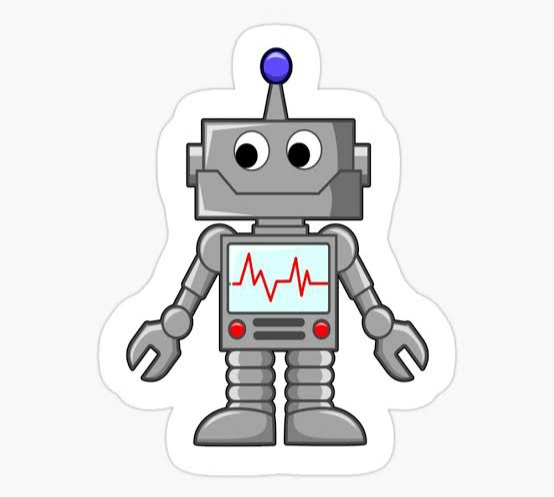History of robots has been originated in the ancient world. In the time of industrial revolution, humans developed the structural engineering capability to control electricity so that machines could be powered with small motors. The notion of a humanoid machine was developed in the early 20th century. Modern Robots were first used in factories as industrial robots. These industrial robots were fixed machines capable of manufacturing duties which allowed production with less human work. Digitally programmed industrial robots with AI have been built since the 2000s.
John McCarthy (a professor emeritus of computer science at Stanford) coined the term “Artificial Intelligence” and subsequently went on to define the field for more than five decades. The word “Robot” is a relative newcomer to the English language. It was the brainchild of the Czech playwright and journalist Karel Capek, who introduced it in his 1920 hit play, Rossum’s Universal Robots.
First Robot emerge in 1954. George Devol invented the first digitally operated and a programmable robot called the “Unimate” from “Universal Automation”. For the next decade, he attempted to sell his product in the industry, but he did not succeed. In 1956, Devol and his partner Joseph F. Engelberger formed the world’s first robot company. Joseph F. Engelberger was an engineer credited with creating the world’s first industrial robot, has died. Joseph F. Engelberger, widely known as the “Father of Robotics, died peacefully on Monday at his home in Newtown, Connecticut, the Robotic industries Association announced.
Academia also made much progress in the creation of new robots. In 1958, at the Stanford Research Institute, Charles Rosen led a research team in developing a robot called “Shakey”. Shakey was far more advanced than the original “Unimate”, which was designed for specialized , industrial applications. Shakey could wheel around the room, observe the scene with its “television” eyes, move across unfamiliar surroundings and to a certain degree , respond to his environment. It was given its name because of its wobbly and clattering movements.
The first electronic autonomous robots with complex behavior were created by William Grey Walter in 1948.
Japan is the world’s predominant robot manufacturing country , where even robots assemble robots: about 47%of the global robot production are made in Nippon. The electrical and electronics industry has a share of about 34%, the automotive industry about 32%, and the metal and machinery industry about 13% of the operational stock.
In April 2001, Canadarm 2 was launched into orbit and attached to the International Space Station. The Canadarm 2 is a larger and more capable version of the arm used by the Space Shuttle and is hailed as “smarter”. Also in the same month, the Unmanned Aerial Global Hawk made the first autonomous non-stop flight over the Pacific Ocean from Edwards Air Force Base in California to RAAF Base Edinburg in Southern Australia and the flight was made in 22 hours.
Commercial and industrial robots are now in widespread use performing jobs more greater accuracy and reliability than humans. They are used in manufacturing , assembly and packing , transport , earth and space exploration, surgery , weaponry , laboratory research and mass production of consumer and industrial goods. Microscopic robots are small enough to be hypodermically injected into human body and controlled wireless, could one day deliver medications and perform surgeries, revolutionizing medicine and health.
Robots eliminate dangerous jobs for human being because they are capable of working in hazardous environments. Robots can handle lifting heavy loads, toxic substances and repetitive tasks. This has helped companies to prevent many accidents , also by saving time and money. Robots can work in hazardous conditions, such as poor lighting, toxic chemicals, or tight spaces. They increase worker safety by preventing accidents since humans are not performing risky jobs. They has the potential to positively transform lives and work practices, raise efficiency and safety levels and provide enhanced levels of service.
Robotics will have a profound effect on the workplace of the future. They will become capable of taking on multiple roles in an organization, so it’s time for us to start thinking about the way we will interact with our new coworkers.
When applied to education, robotics and simulators can change the way students learn and ultimately create a more knowledge and well adjusted student. Robotics can be used to bring students into the classroom that otherwise might not be able to attend.
Robotics helps address the growing demand for teaching science and technology ins schools. As well as exemplifying technology directly by programming the robot, students also learn about science and maths and get understanding of how these subject link together.










